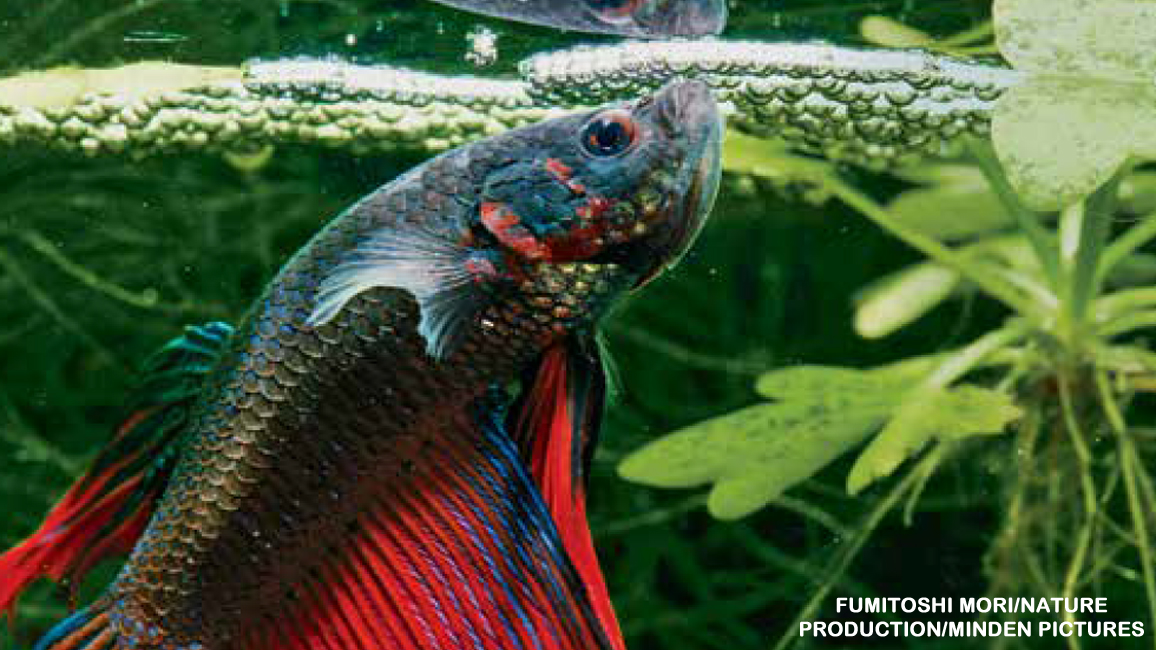
Fishy Nests
By Kathy KrankingSome fish keep their eggs in nests—and those nests can be in some pretty strange places!
 MR. BIGMOUTH
MR. BIGMOUTH
The male dusky jawfish does something amazing—he uses his mouth as a nest! For 7 to 10 days, he goes without eating while he keeps the eggs safe inside. Once the young hatch and swim off, it’s chow time again for Dad!
GLASS HOUSE
A seaweed blenny isn’t picky about what it uses for a nest. Empty shells, cracks in rocks, or even ocean litter will do. This male blenny is inside a broken bottle, guarding his mate’s eggs until they hatch.
TUNNEL OF LOVE
The three-spined stickleback works hard to build a tunnel-shaped nest out of plant bits. If a female likes the nest, she swims inside and lays her eggs. Then the male guards the eggs until the babies (circle) hatch.
 STICKY SITUATION
STICKY SITUATION
Some fish find a safe place to keep their eggs in. But others find a spot to lay their eggs on. A female goby has laid her sticky eggs on the outside of a soft animal called a sea squirt. Now her mate guards them. He gives them oxygen by fanning them often with his tail until they hatch.
MAKING A SPLASH
The splashing tetra uses a nest that’s not even in the water! A male and female will leap from the water onto an overhanging leaf. The female lays eggs, and the male fertilizes them. Then they slide back into the water. The sticky eggs stay on the leaf, and the male uses his tail to splash water on them so they won’t dry out! He keeps doing this until the eggs hatch.
MUDDY NURSERY
Mudskippers are unusual fish because they’re able to breathe in the air as well as in water. They live in burrows in the mud, which they dig with their mouths. When it’s spawning time, a female mudskipper lays eggs in a special chamber deep in the burrow. Then her mate guards the burrow, chasing off any other mudskippers that come near.
EGGS TO GO
The leafy sea dragon has a convenient place to keep his mate’s eggs: on his tail! Before the sea dragon mates, the skin there becomes soft and squishy. His mate lays her eggs on the squishy skin. Then the skin hardens, making a pocket around each egg. Later, baby dragons pop out of the pockets and swim away.
BUBBLE BUILDER
You’ve probably blown bubbles for fun. But a male betta (BET-uh) blows bubbles to build a nest. He blows tiny bubbles at the water’s surface. The bubbles are covered with mucus (MEW-kus) from the betta’s mouth. That makes them stick together, forming a safe place for the betta and his mate to keep their eggs.
















